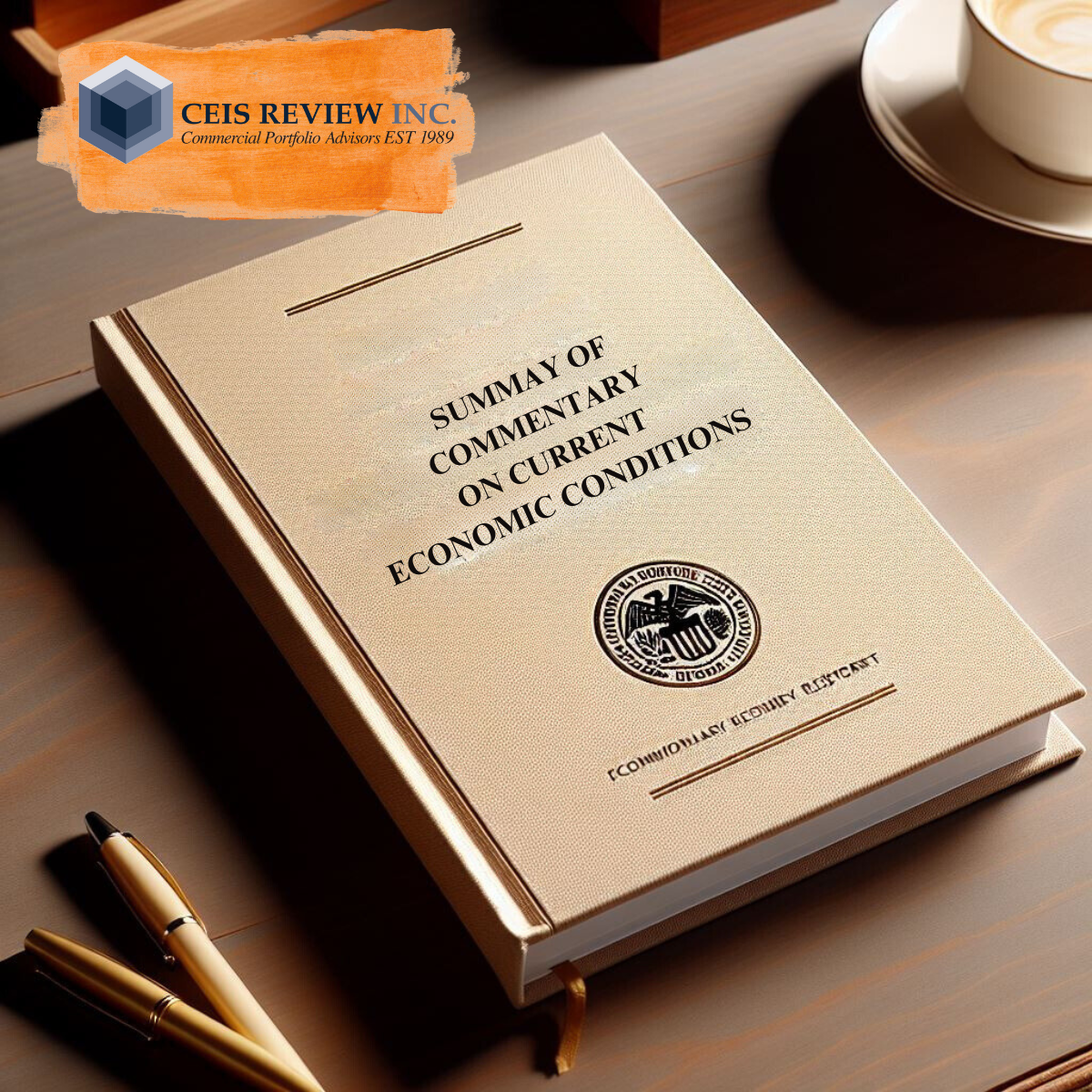Established in 1989, CEIS Review has provided industry-leading Commercial Loan Review programs to Financial Institutions for over 30+ years. CEIS Review advises community banks, regional banks, money center banks, international banks, finance companies, and other specialty commercial lending organizations.
This paper outlines some fundamental elements that should be considered when structuring a commercial loan review program.
It’s always better to uncover problems sooner rather than later. A perfect example could be one’s own daily car: an annoying noise that you are unable to identify could be nothing at all, but it also could be a sign of something worse to come. Without investigating the source of the noise, you are opening yourself up to potentially being stranded on the side of the road. Just as a good mechanic can regularly service and assess the health of your car, a qualified Loan Review program can do the same for your financial institution’s loan portfolio.
The Loan Review function serves many purposes, but the fundamental purpose of the program is to monitor the risk and administration of an institution’s largest financial asset—the loan portfolio—and to make sure that the loan portfolio is staying on course with the direction set forth by senior management and the board. Loan Review is a powerful quality control instrument to be utilized by active bank management to monitor both new lending activity and the quality of an established loan portfolio.
Four Compelling Purposes of a Commercial Loan Review
Before we go into further detail about the importance of a Loan Review program, it may be helpful to understand the four overarching purposes of a Loan Review:
- To ensure that underwriting and portfolio management satisfy regulatory expectations as well as industry best practices
- To provide bank management and the board with an objective assessment of credit quality and ongoing portfolio management
- To serve as a critical component of a comprehensive, enterprise-wide, risk management practice
- To provide bank management valuable information about ongoing and emerging market trends and developing areas of regulatory focus
How a Loan Review Program Empowers Bank Management
By having a sound and objective Loan Review program in place, an institution is in a far better position to proactively manage their respective portfolios in regards to risk and overall direction. An example of this would be if management observed more new loans being booked within a specific segment, or with looser credit standards. With the knowledge gained from a Loan Review program, management would be empowered to adjust the course of ongoing lending and management ahead of any potential losses. Or, at the least, management would now have the option to reinforce a reserve cushion if the risk was migrating in a strategically acceptable direction.
Vital Information for Management and the Board
The primary purpose of a Loan Review program is to objectively monitor and evaluate the quality and administration of a loan portfolio for senior management and the board of directors. This evaluation provides management with actionable insights regarding:
- Present and emerging risk trends within specific portfolio segments or portfolio-wide
- Portfolio-wide exception levels that can be drilled down to specific segments & lenders if needed
- A truly objective assessment of overall portfolio asset quality
In addition to delivering these valuable portfolio metrics, a Loan Review program helps management and the board to drill down on areas such as:
- Review the quality of credit underwriting
- Review the accuracy of the risk ratings assigned by lenders
- Identify any problem loans/relationships within the portfolio
- Identify borrower-level loan policy exceptions
- Evaluate loan portfolio quality by segment
- Evaluate the effectiveness of the credit administration function
- Ensure compliance with banking laws and regulations
- Benchmark an institution’s portfolio against similar institutions’ portfolios to enable insight into portfolio performance
Loan Review Program Details
The loan review function is a tool that monitors the quality of the respective institution’s loan portfolio as it relates to internal
lending policies, and the effectiveness of the credit administration function, and is thus a tool to be utilized by Senior Management and the Board. The Loan Portfolio is typically the asset that presents the greatest potential risk for loss exposure to banks.
The Board of Directors of each financial institution has the legal responsibility to formulate appropriate lending policies and to supervise ongoing implementation thereon. Although smaller institutions are not expected to maintain separate loan review departments, it is essential that an effective loan review system be in place at all regulated financial institutions.
The Loan Review Process
This system will provide vital and objective information to Senior Management and the Board regarding overall credit quality, trends in the various portfolio segments, adequacy of the ALLL, identification of loans with well-defined weaknesses, and adherence to and/or deviations from established loan policies and procedures. All of which is information that is critical for financial and regulatory reporting purposes. This continuous evaluation of the quality of the bank’s loan portfolio must be specifically outlined within the bank’s lending and collection policies as approved by the Board.
Any lending policy should not be a static document but rather one that is reviewed periodically and revised accordingly to reflect changing conditions within the community served. A separate loan review policy or system should be incorporated within the lending or credit policy manual, which should include a written description of the overall credit grading process, frequency and scope of reviews, and qualifications and independence of loan review personnel. Generally, the loan review policy will provide for reviews of all new loans at a certain threshold level made since the previous review and an appropriate sampling of the entire portfolio to reach an appropriate coverage percentage. Any loan review function, whether it is internal or via an independent loan review service such as CEIS Review, Inc. (CEIS), should be designed to address the following objectives:
Independent or Internal Loan Reviews Should:
- Promptly identify loans with well-defined weaknesses so that timely action can be taken to minimize the bank’s credit loss;
- Provide essential information to assess the adequacy of the bank’s ALLL;
- To assess the adequacy of and adherence to the bank’s loan policy and procedures and that the loan portfolio is in compliance with Federal and State regulations;
- To provide management and the Board of Directors with an objective assessment of the overall portfolio quality;
- To identify relevant trends that might affect the collectability of the loan portfolio and isolate certain potential problems;
- To provide management and the Board with accurate and objective information related to credit quality that can be used for financial and regulatory purposes;
- To identify weaknesses in loan documentation and credit file reporting and provide appropriate corrective recommendations;
- To monitor collateral on secured loans for adequacy thereon (based on the guidelines set forth within the Bank’s Credit Policy) and for perfected collateral liens;
- To ensure that appraisals on troubled real estate and other secured loans are maintained on a timely basis;
- To review all troubled problem loan reports for appropriateness of the plan of action, risk rating designation and loan loss reserve allocation.
Loan Review Outsourcing & Customization
A Loan Review program should include all of the above-cited essential ingredients which can then be formulated into a comprehensive report on the business practices and resulting credit quality of the respective institution. As previously mentioned, many regional banks across the country that are not sufficient in size to maintain a separate and distinct loan review department commonly outsource this function. When being outsourced an institution should ensure that the loan reviews are conducted by experienced professionals that have senior or executive level banking experience, as opposed to junior level individuals that may not recognize potential issues before they arise. Loan review programs should always be customized to an institution’s needs, but should always prescribe a certain portfolio coverage percentage to be achieve, typically CEIS Review see’s this being 60-75% of the average outstanding loans over a twelve month period.
Sections of the portfolio which should be included in the review should be the criticized/classified and or watch portfolio segment, and then a substantial sampling of “Pass” rated credits in order of potential risk and exposure in order to meet the coverage requirements designated.
Engaging with a Loan Review Provider
When engaging with an outside Loan Review provider, there should always be open communication between the onsite review team and the lending staff so that any material findings may be discussed while the team is present, especially where there may be a material difference with respect to a final risk rating grade determination. Additionally, a meeting with the appropriate management at the end of the on-site review should be available so that any differences on open items and observations regarding the lending and administrative process can be presented. Subsequently, a written “draft” report should follow for management’s review as well as giving them the opportunity to submit any recent developments that have occurred since the end of the review that might impact final risk rating assignments.
Whether the Loan Review function is internal or external department, that department should be able to produce a professional and decisive report so that the institution’s management can then utilize those reports to better manage their respective institutions. In order to do so the report should elaborate on the overall portfolio’s quality, trends, administrative process, and policy adherence.
Additionally, the Loan Review function should pay particular attention to the organizations method of calculation of the Allowance for Loans and Lease Losses. This goes to the heart of senior management’s understanding of the entire portfolio to include an effective action plan for troubled loans and the establishment of a reporting mechanism for “watch assets” and non-accrual loans. Depending on the size of the financial institution and the profile of its loan portfolio, an independent confirmation or validation of the ALLL process by an experienced professional firm is beneficial both to Senior Management and the Board and for the benefit of the Accountant Firms and Regulators.
Final Loan Review Considerations
It is important to note here that accountant auditors and Federal and State auditors will always request a copy of the most recent independent loan review report in their respective initial request for information. There is great reliance on these independent reports as they are not internally generated by management, and they represent a completely objective analysis of the quality of the Bank’s loan portfolio which is the single most vulnerable asset that can be affected by economic recessions or changes in local environments. This Loan Review Report is necessary and essential to the ongoing safety and soundness of the financial institution in question. Regulators mandate that a written response from management with a corrective action plan outlined should be provided to address any substantive criticisms or recommendations.
In summation, a Loan Review Audit by an independent professional firm experienced in the business is not just another internal management tool as it is a necessity for the establishment of credibility to those external entities that review and supervise the respective organizations. Financial Institutions strive for “Satisfactory” or better ratings so as not to be restricted in their individual business models or platforms that are used on an ongoing basis to serve the local communities within which they reside.
About CEIS Review, Inc.
CEIS Review was established in 1989 for the specific purpose of providing professional services to banks and other financial institutions. Services include:
- Loan Review
- Portfolio Acquisition Review / Due Diligence
- Portfolio Stress Testing
- CRE & C&I
- Construction Projects
- Capital Impact Analysis
- Credit Process Review
- Loan Review Program Assessment
- Credit Policy Updates
- Credit Risk Management Review
- Validation of CECL methodology
- Methodology refinement or development
- Custom loan and credit workshops and seminars
CEIS’ client base includes community banks, regional banks, money center banks, international banks, finance companies, and other specialty commercial lending organizations.
Learn More Here:
Contact Form







